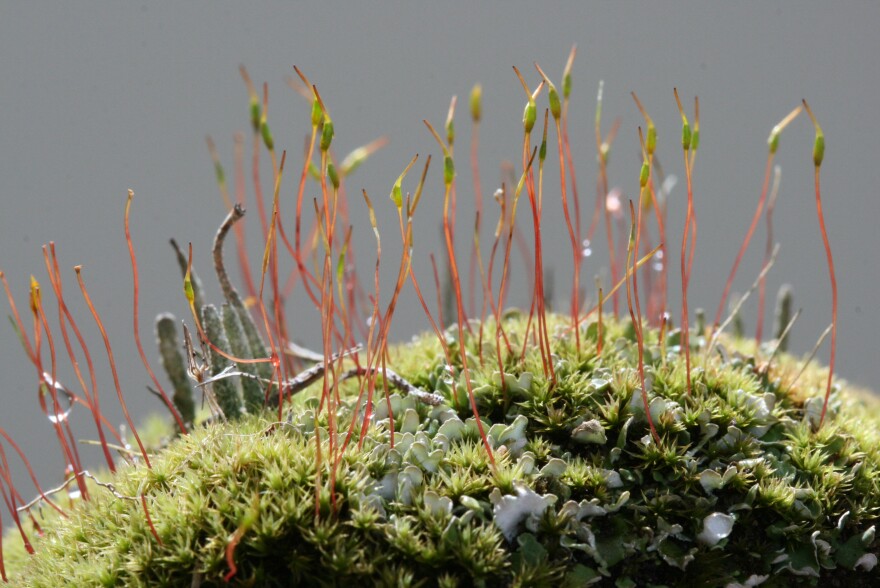Kids love to play in the dirt. So Flagstaff ecologist Anita Antoninka is channeling that love into learning… using it as a way to teach kids about the effects of climate change on the earth’s biocrust. Today, she’s working with a seventh grade science class at Northland Preparatory Academy to see how a warming planet affects moss.
“Why moss? They can go from dry and basically dead to photo synthetically active in about 30 seconds. So, they’re kind of fun just to look at. They can be a pioneer species, so after a forest fire, they come in really quickly and that can be important to hold the soil in place and to stop erosion,” says Antoninka.
The students gather around Antoninka as she sets up Petri dishes to grow moss. They’re testing survival hypotheses using different amounts of water, ice and snow. Here’s 13-year-old Cassidy Bonny:

"The interesting thing is that some of the moss can grow on rocks. It can grow in the dirt, it can grow in, I think, the ocean. It’s just really cool where it can grow everywhere,” she says.
Her classmate Bryce Twidwell tests the idea of watering the moss only once a week, sort of a deluge.
“So we think if we’re adding all the water at once, then the moss is not going to have enough supplemental water to live through the week and it’s going to run out of water because it’s going to be photosynthesizing throughout the week,” he says.

Their teacher, Susan Brown, says this hands-on lesson lets her students see the affect climate change.
"So, it’s making something that they’ve heard about, by making it real. Because a lot of the students have heard about it, but they don’t really understand the science behind it, and this gives them an opportunity to actually see what happens when we start manipulating those variables," Brown says.

The students will continue to monitor the moss throughout the school year. They’re also going out in the field with scientists at Northern Arizona University to study high elevation biocrust.









